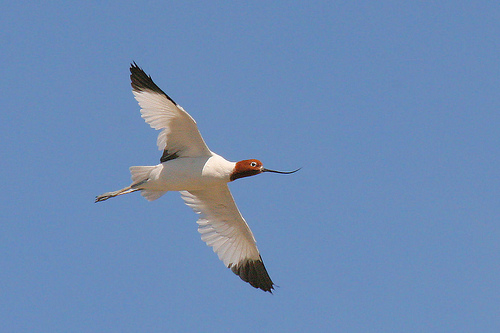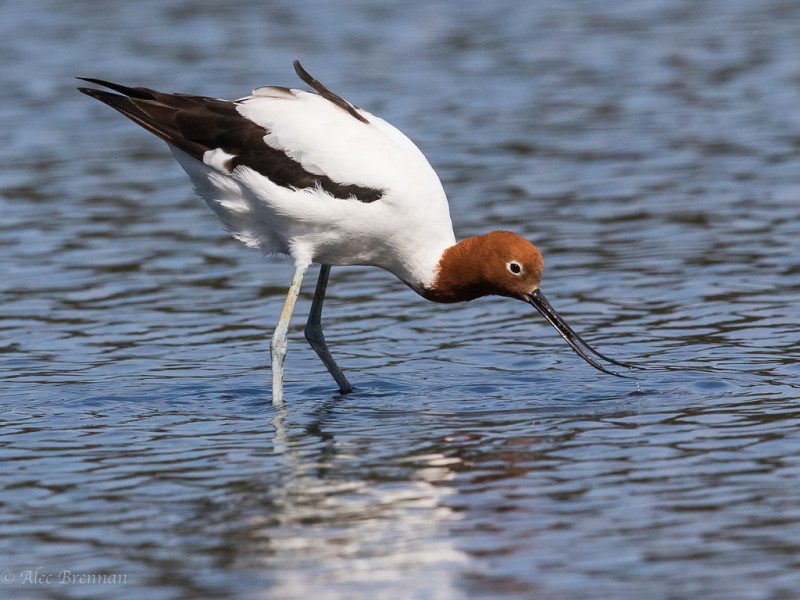Colours
Distinguishing features
The distinguishing feature is the distinctive upcurved bill that is used for skimming the surface of water to catch small invertebrates. The adult's head and neck is a rich chestnut brown in colour with a narrow white eye ring and a red-brown iris. The secondary coverts and primary feathers are black and the remainder of the plumage is white. The bill is black and the legs are a pale grey-blue.
Both male and female are similar in colouring and size; neither is there seasonal variation in appearance.
Juveniles are similar in appearance and difficult to identify once post-juvenile moult has started, the head is sometimes paler and browner that the adults. (Wikipedia)
Size
- From 40 cm to 46 cm (Length of specimen) - applies to Adults
Wingspan
- Wingspan data is not yet available.
Synonyms
Distribution

©Atlas of Living Australia: Australian distribution: Red-necked Avocet (Recurvirostra novaehollandiae)
Distribution and habitat preferences
It is endemic to Australia and is fairly common and widespread throughout, except for the north and north east coastal areas of the country.
It is highly nomadic, due mainly to the high variation in rainfall, moving around the continent in search of suitable habitat. It has a very wide range in Australia but is comparatively rare on the northern and north-eastern coasts. The birds have a preference for salt or brackish water and are generally found in shallow wetland areas that are either fresh or salt, or on estuarine mudflats.
The species is rare in Tasmania and an occasional vagrant to New Zealand. (Wikipedia)
Diet
The diet mainly consists of small invertebrates that it catches in the shallows by sweeping its slender up curved bill from side to side through the water surface and underlying mud. As, unlike other shore birds, they swim readily, this enables them to upend in deeper water (like a duck) and continue feeding. Food consists of mainly aquatic insects and their larvae such as brine shrimp, crustaceans and also seeds. Juveniles are often limited to small insects and seeds until their bill is more developed, consuming food with a pecking action rather than the water skimming done by adults. (Wikipedia)
Web resources
References
- Simpson, K., N. Day and P. Trusler (2004). Field Guide to Birds of Australia: 7th Edition Penguin Group (Australia), Camberwell, Victoria.


